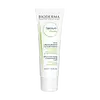What's inside
What's inside
 Key Ingredients
Key Ingredients

 Benefits
Benefits

 Concerns
Concerns

 Ingredients Side-by-side
Ingredients Side-by-side

Water
Skin ConditioningGlycerin
HumectantParaffinum Liquidum
EmollientEthylhexyl Palmitate
EmollientDipropylene Glycol
HumectantXylitol
HumectantBis-PEG/PPG-16/16 PEG/PPG-16/16 Dimethicone
EmollientSodium Acrylate/Sodium Acryloyldimethyl Taurate Copolymer
Emulsion StabilisingIsohexadecane
EmollientCaprylic/Capric Triglyceride
MaskingGlycyrrhetinic Acid
Skin ConditioningTocopheryl Acetate
AntioxidantPolysorbate 80
EmulsifyingDisodium EDTA
Allantoin
Skin ConditioningFructooligosaccharides
HumectantMannitol
HumectantPropylene Glycol
HumectantCetrimonium Bromide
AntimicrobialCeramide 3
Skin ConditioningRhamnose
HumectantGinkgo Biloba Leaf Extract
Skin ConditioningDodecyl Gallate
AntioxidantLaminaria Ochroleuca Extract
Skin ConditioningParfum
MaskingWater, Glycerin, Paraffinum Liquidum, Ethylhexyl Palmitate, Dipropylene Glycol, Xylitol, Bis-PEG/PPG-16/16 PEG/PPG-16/16 Dimethicone, Sodium Acrylate/Sodium Acryloyldimethyl Taurate Copolymer, Isohexadecane, Caprylic/Capric Triglyceride, Glycyrrhetinic Acid, Tocopheryl Acetate, Polysorbate 80, Disodium EDTA, Allantoin, Fructooligosaccharides, Mannitol, Propylene Glycol, Cetrimonium Bromide, Ceramide 3, Rhamnose, Ginkgo Biloba Leaf Extract, Dodecyl Gallate, Laminaria Ochroleuca Extract, Parfum
Water
Skin ConditioningCaprylic/Capric Triglyceride
MaskingDimethicone
EmollientMethylpropanediol
SolventCetearyl Alcohol
EmollientPolymethyl Methacrylate
Glycerin
HumectantC12-16 Alcohols
EmollientCetearyl Isononanoate
EmollientDistarch Phosphate
AbsorbentPPG-12/Smdi Copolymer
EmollientStearic Acid
CleansingTocopheryl Acetate
AntioxidantPropylene Glycol
HumectantSodium Acrylate/Sodium Acryloyldimethyl Taurate Copolymer
Emulsion StabilisingPalmitic Acid
EmollientCetearyl Olivate
Caprylyl Glycol
EmollientTricaprylin
MaskingBehenyl Alcohol
EmollientHydrogenated Lecithin
EmulsifyingSorbitan Olivate
EmulsifyingSqualane
EmollientHydroxyacetophenone
AntioxidantRetinol
Skin ConditioningDisodium EDTA
Arginine
MaskingSodium Hyaluronate
HumectantPhenylpropanol
MaskingCitrus Aurantium Amara Flower Oil
MaskingRosmarinus Officinalis Leaf Oil
MaskingSorbitol
HumectantCitrus Aurantium Dulcis Peel Oil
MaskingHylocereus Undatus Fruit Extract
Skin ConditioningLavandula Angustifolia Herb Oil
PerfumingAnthemis Nobilis Flower Oil
MaskingPogostemon Cablin Leaf Oil
MaskingVetiveria Zizanoides Root Oil
MaskingBHT
AntioxidantAscorbic Acid
AntioxidantLimonene
PerfumingLinalool
PerfumingGeraniol
PerfumingWater, Caprylic/Capric Triglyceride, Dimethicone, Methylpropanediol, Cetearyl Alcohol, Polymethyl Methacrylate, Glycerin, C12-16 Alcohols, Cetearyl Isononanoate, Distarch Phosphate, PPG-12/Smdi Copolymer, Stearic Acid, Tocopheryl Acetate, Propylene Glycol, Sodium Acrylate/Sodium Acryloyldimethyl Taurate Copolymer, Palmitic Acid, Cetearyl Olivate, Caprylyl Glycol, Tricaprylin, Behenyl Alcohol, Hydrogenated Lecithin, Sorbitan Olivate, Squalane, Hydroxyacetophenone, Retinol, Disodium EDTA, Arginine, Sodium Hyaluronate, Phenylpropanol, Citrus Aurantium Amara Flower Oil, Rosmarinus Officinalis Leaf Oil, Sorbitol, Citrus Aurantium Dulcis Peel Oil, Hylocereus Undatus Fruit Extract, Lavandula Angustifolia Herb Oil, Anthemis Nobilis Flower Oil, Pogostemon Cablin Leaf Oil, Vetiveria Zizanoides Root Oil, BHT, Ascorbic Acid, Limonene, Linalool, Geraniol
 Reviews
Reviews

Ingredients Explained
These ingredients are found in both products.
Ingredients higher up in an ingredient list are typically present in a larger amount.
This ingredient is an emollient, solvent, and texture enhancer. It is considered a skin-softener by helping the skin prevent moisture loss.
It helps thicken a product's formula and makes it easier to spread by dissolving clumping compounds.
Caprylic Triglyceride is made by combining glycerin with coconut oil, forming a clear liquid.
While there is an assumption Caprylic Triglyceride can clog pores due to it being derived from coconut oil, there is no research supporting this.
Learn more about Caprylic/Capric TriglycerideDisodium EDTA plays a role in making products more stable by aiding other preservatives.
It is a chelating agent, meaning it neutralizes metal ions that may be found in a product.
Disodium EDTA is a salt of edetic acid and is found to be safe in cosmetic ingredients.
Learn more about Disodium EDTAGlycerin is already naturally found in your skin. It helps moisturize and protect your skin.
A study from 2016 found glycerin to be more effective as a humectant than AHAs and hyaluronic acid.
As a humectant, it helps the skin stay hydrated by pulling moisture to your skin. The low molecular weight of glycerin allows it to pull moisture into the deeper layers of your skin.
Hydrated skin improves your skin barrier; Your skin barrier helps protect against irritants and bacteria.
Glycerin has also been found to have antimicrobial and antiviral properties. Due to these properties, glycerin is often used in wound and burn treatments.
In cosmetics, glycerin is usually derived from plants such as soybean or palm. However, it can also be sourced from animals, such as tallow or animal fat.
This ingredient is organic, colorless, odorless, and non-toxic.
Glycerin is the name for this ingredient in American English. British English uses Glycerol/Glycerine.
Learn more about GlycerinPropylene Glycol is an odorless, colorless liquid. As a humectant, it helps skin retain moisture. It also aids in delivering active ingredients.
Another role of this ingredient is preventing a product from melting or freezing. Propylene glycol also adds antimicrobrial properties to a product, elongating product lifespan.
This ingredient is considered an organic alcohol and commonly added into both cosmetics and foods.
Those with sensitive skin or conditions may develop a rash when using this ingredient.
Learn more about Propylene GlycolThis long ingredient is a copolymer of sodium acrylate and sodium acryloyldimethyl taurate monomers.
It is used to help stabilize other ingredients and create a thicker gel-like texture.
Emulsifiers prevent oils and waters from separating.
Learn more about Sodium Acrylate/Sodium Acryloyldimethyl Taurate CopolymerTocopheryl Acetate is AKA Vitamin E. It is an antioxidant and protects your skin from free radicals. Free radicals damage the skin by breaking down collagen.
One study found using Tocopheryl Acetate with Vitamin C decreased the number of sunburned cells.
Tocopheryl Acetate is commonly found in both skincare and dietary supplements.
Learn more about Tocopheryl AcetateWater. It's the most common cosmetic ingredient of all. You'll usually see it at the top of ingredient lists, meaning that it makes up the largest part of the product.
So why is it so popular? Water most often acts as a solvent - this means that it helps dissolve other ingredients into the formulation.
You'll also recognize water as that liquid we all need to stay alive. If you see this, drink a glass of water. Stay hydrated!
Learn more about Water